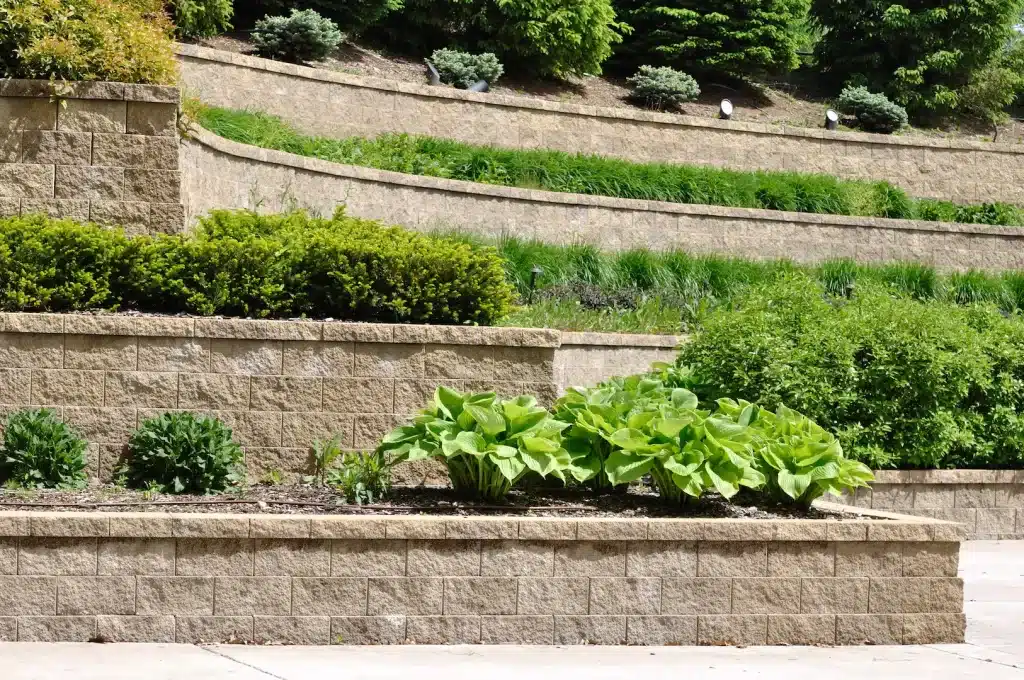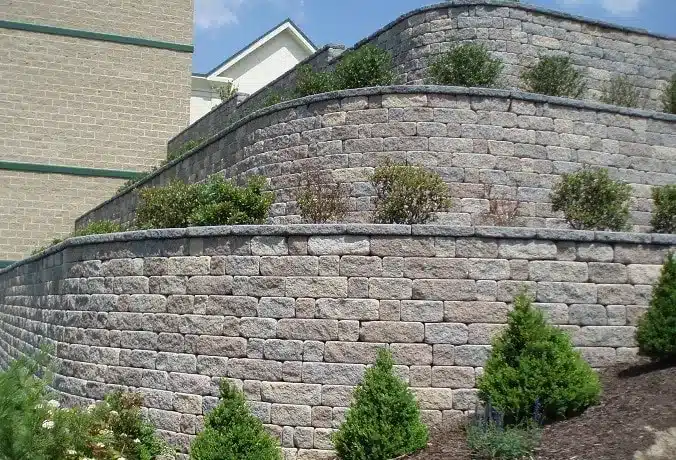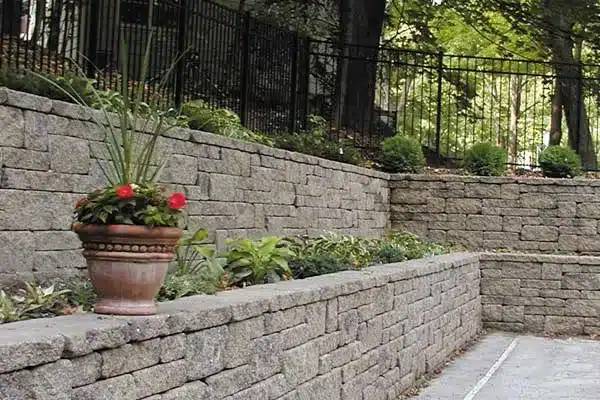What Are Segmental Retaining Walls?
Commonly used for modular block retaining walls used for vertical grade change applications. The walls are designed and constructed as either gravity retaining walls (conventional) or reinforced soil retaining walls.
Segmental retaining walls consist of modular concrete blocks that interlock with each other. They are used to hold back a sloping face of soil to provide a solid, vertical front. Without adequate retention, slopes can cave, slump, or slide. With the unique construction of segmental retaining walls, higher and steeper walls can be constructed with the ability to retain the force of lateral earth pressure created by the backfill soil.

What is the maximum height of a segmental retaining wall?
Although wall heights up to 8 ft (2.44 m) for conventional (gravity) walls and 14 ft (4.28 m) for soil-reinforced walls are presented, properly engineered walls can exceed these heights.
What is a segmental block?
Segmental block retaining walls have a facing and lateral tieback system. The facing system most often includes modular concrete blocks. These blocks interlock with one another and the lateral restraining members. Lateral tiebacks are geogrids, a type of reinforcement, that are buried in the backfill.
What are the four types of retaining walls?
The four main types of retaining walls are:
- Gravity retaining walls.
- Cantilever retaining walls.
- Embedded retaining walls.
- Reinforced soil retaining walls.
What is the strongest type of retaining wall?
Poured Concrete
The strongest and most durable choice, concrete can be stamped, stained, veneered, or carved to look like mortared stone.



Comments
Post a Comment